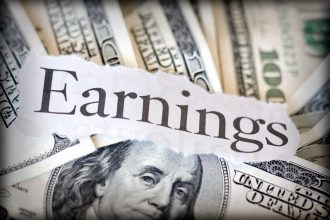Soli Cayetano’s path to a real estate portfolio that makes her $10,000 to $12,000 in net income per month started in college.
She got a job in office leasing at a commercial real estate firm as a sophomore. But in the spring of her senior year, in 2020, office leasing dried up because of the pandemic. As a commission-based employee, her income dwindled.
“I needed to figure out how to build passive income streams for myself, so that if this happened again, I wouldn’t be left with no money coming in,” she told MarketWatch.
Cayetano, now 25, looked online for help, and found Bigger Pockets and its stories of successful real estate investors. She decided to look for a rental property, thinking her work experience would give her an advantage, and started posting about her progress on social media.
She grew up in the Bay Area, where homes were too pricey for what she had in the bank. So she started looking at Cincinnati, which she’d visited for work. She saw homes on Zillow selling for $100,000, and in summer 2020, closed on her first rental property for just under that.
She was 22, and said she got a mortgage without a co-signer thanks to her work history and the fact that she’d had a credit card since she was 18. She made a 20% down payment with money she’d saved from work.
Cayetano bought the house sight unseen but decided to fly out and do renovations herself, even though she was not particularly handy. “I had no idea even how to use a drill,” she admitted. (She said she learned through YouTube.)
After four weeks, she hired a contractor to finish the job. She said she spent roughly $15,000 on renovations, putting the costs on a credit card. She hired and then fired a property manager, deciding instead to manage the house herself from California.
She said she refinanced the property six months later, and did the BRRR method, which stands for buy, rehab, rent, refinance, repeat.
“The BRRR strategy is very common for investors who don’t have a lot of money but want to learn how to recycle that small amount of money over and over again,” she said.
Instead of partying or traveling, Cayetano said she made sacrifices and practiced delayed gratification to grow her portfolio.
She scaled up using private money, from friends and family — including her mom, a professional violinist-turned-office manager — and contacts from Instagram. She continued to use the BRRR method to pay her investors back.
And less than three years after her first deal, she has done better than some of the early goals she posted on Instagram, like hitting $100,000 in passive income by 30. She’s already there.
Now, Cayetano owns or co-owns 40 property units, with her more recent purchases consisting of single-family houses, a duplex and an office building, in Augusta, Ga., Aiken, S.C., and Cincinnati. She has a 50-50 equity partner, Carrick Young, for most of her units, and shares one-third ownership of others with Young and a third partner, Phillip Vera. Vera is based in Augusta, which was logistically helpful as they got started there.
A portion of the units are rented, some to short- or mid-term renters. Other units, she and her partners plan to flip.
She also invested in a 64-unit apartment syndication in Cleveland, and said she’s a general partner but doesn’t include this in her overall unit count. In a syndication, a group of investors pool their money to buy a property.
Real estate has given Cayetano the chance to be “work-optional,” plus “time freedom, financial freedom, location freedom, all of those things.”
She doesn’t own a primary home, choosing instead to “hop around” as a digital nomad, renting and staying with friends in different cities around the Bay Area. She traveled internationally for a large chunk of last year, to Guatemala, Mexico, Paris, Ireland and Portugal. She also spent time in Cincinnati.
While she has enough passive income to cover her bills, she aims to increase what she makes to a net $20,000 a month.
One key to her success is her network: friends and experts she found online to hold her accountable and help her through problems she encountered.
“You’re going to change your actions based on the people you surround yourself with,” she said, “so if you can find that real estate investing community, wherever it is, then you’re more likely to be successful.”
Brian Quist contributed to this story.
Read the full article here




